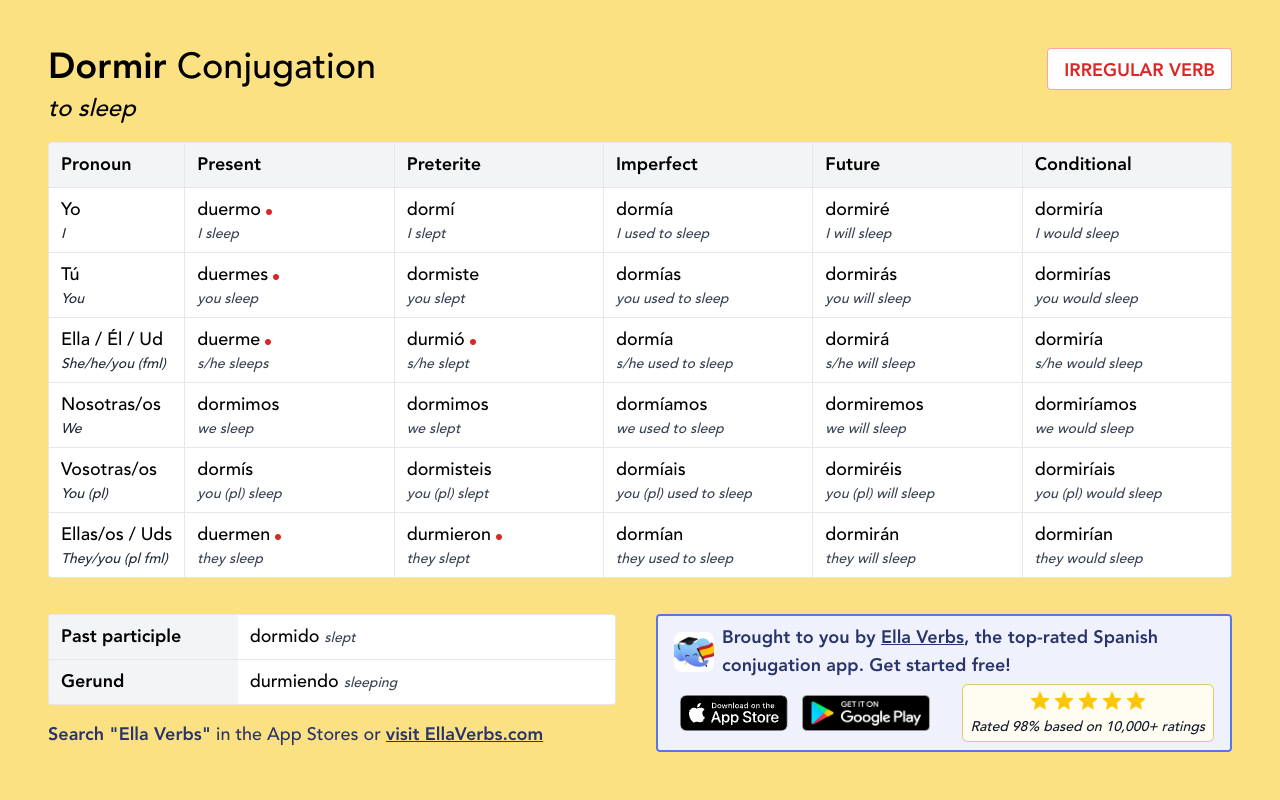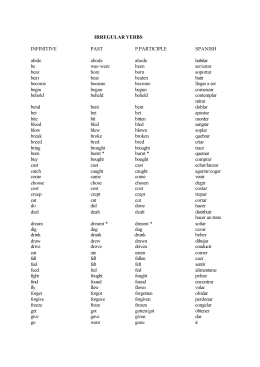
However, these adjectives can also be combined with other verbs: In other words, certain past participles can help you describe a person, place, or thing.Įstar + past participle is one of the most common formulas for past participles working as adjectives. Many past participles in Spanish are used as adjectives. Indirect and direct object pronouns are also placed before ‘haber’. If you need to form the past participle of a reflexive verb, add the corresponding participle ending to the verb stem and always place the reflexive pronoun before ‘haber’. Without you, I wouldn’t have done my homework. īefore 7, Sonia had already opened the store. Here are some examples:Īntes de las 7, Sonia ya había abierto la tienda.

The primary rule you must follow with this application is ensuring that ‘ haber’ is properly conjugated.

So, as you can see, the Spanish past participle is crucial to conjugate tenses such as: The formula to create perfect tenses in Spanish is haber + past participle. The Spanish past participle has three main uses:īelow, I’ll go over how you can apply the past participle to these situations.

So far, you’ve learned that past participles in Spanish are verb forms we create by adding – ado or -ido to a verb stem. When to Use the Past Participle in Spanish But, as you can see, more verbs follow this behavior. Take Note: The Royal Spanish Academy only recognizes imprimir, freír and proveer as the only three verbs with a regular and irregular participle in Spanish. You can only use the irregular participle when using the formula: ser + adjective. Irregular Past Participle used as an Adjective:Įxception: Confundir doesn’t follow this rule. Regular Past Participle used in Compound Tense: In daily life, Spanish speakers use the regular past participle to form perfect tenses, whereas the irregular past participle of the same verb is used as an adjective. It’s a common misconception to assume that these participles are interchangeable. Those verbs include but are not limited to: Verb In Spanish, some verbs have both a regular and irregular past participle. Verbs that derive from them will also have an irregular past participle. For example, contra decir, de scribir, de volver, descom poner, and so on. Many of the verbs listed in the previous table are used as suffixes to form other verbs. Irregular past participle verbs in Spanish include: Verb Although there’s no formal rule, you’ll notice that most of them use – so, -cho, and – to endings. The most common irregular past participles in Spanish are -ER and -IR verbs. Spanish irregular past participles do not use the same patterns you’ve learned in the previous section.
Past participle spanish dormir download#
If you want to learn more cool patterns like this, you can download my Spanish Learning Kit. Take Note: -ado and – ido is the Spanish form of the English suffix – ed, which it’s also added to regular verbs. This is because the stems of these verbs do not end with ‘a’, ‘e’ or ‘o’. Notice that this rule doesn’t apply to -IR verbs like h uir, constr uir, conseg uir and similar. This written accent is added to ease the pronunciation. Some examples of verbs that follow this pattern are: With these verbs, the past participle ending is -ído. The past participle ending for -ER and -IR verbs whose stem ends with an a, e, or o, must have a written accent. This time look at the stem patterns for leer and the other verbs. However, unlike the other examples, the past participle ending has an accent mark. The verb leer is a verb with a regular past participle form in Spanish. To see these endings in action, here is a table with the past participle form of estar, apagar, barrer, leer, dormir, and sentir. The past participle endings in Spanish are: Like other Spanish tenses, the past participle endings depend on whether you’re conjugating an – ar, -er, or – ir verb. The regular past participle is formed by adding the corresponding endings to the verb stem.


 0 kommentar(er)
0 kommentar(er)
